
After contemplating this inquiry, I arrived at the determination that up until the mid-1800s, humanity lacked any concrete knowledge regarding the inner composition of our planet. All notions regarding the subterranean realm were merely unsubstantiated hypotheses or legends. The primary factor contributing to this predicament was the limited technological advancements at that time.

Current and Historical Understanding of Earth’s Structure
Presently, humanity is aware that the Earth is comprised of multiple layers, each with distinct chemical compositions.
- The outermost layer is known as the Earth’s crust, which is relatively thin.
- Beneath the crust lies the viscous mantle, which is further divided into the upper and lower mantle, composed of oxides and silicates.
- In the planet’s core, the central region is made up of molten metal surrounded by nickel and iron.
In the past, it was impossible to acquire this information due to the lack of advanced technology. The extent of knowledge regarding the Earth’s internal structure was confined to the depths of mines used for extracting minerals. Primarily, ancient civilizations shared similar beliefs about the underworld:
- The Earth is hollow beneath its crust.
- The underworld is inhabited.
- There is an afterlife beneath the earth.
- The underworld is abundant in riches.
Myths pertaining to the underworld exhibited slight variations across different nations. For instance, Europeans, who had significant expertise in mining, held the belief that subterranean beings known as diggers or dwarves resided underground and were involved in the extraction of gold and other minerals.

However, the indigenous populations of the northern regions, who were not involved in ore mining, had a unique belief system regarding the underworld.
Medieval Perspectives on Earth’s Composition
During this era, there was a regression in the understanding of Earth’s structure, as the ancient geocentric worldview predominated and was supported by the church. The church had no interest in exploring the inner workings of the Earth. It sufficed for individuals to know that hell, with all its circles, resided within.

It’s fascinating to see how mountains and changes in terrain were explained back then: “…infernal flames and fiery winds rage in the depths of hell and, under their pressure, bulges in the shape of mountains appear on the surface of the earth…”
I have a great passion for space, which I have been studying since school, and even after graduating, I continue to search for new discoveries. I view our planet as a truly remarkable place where human beings, plants, and animals have evolved, and in the vastness of space, Earth stands out as the most exquisite sight.
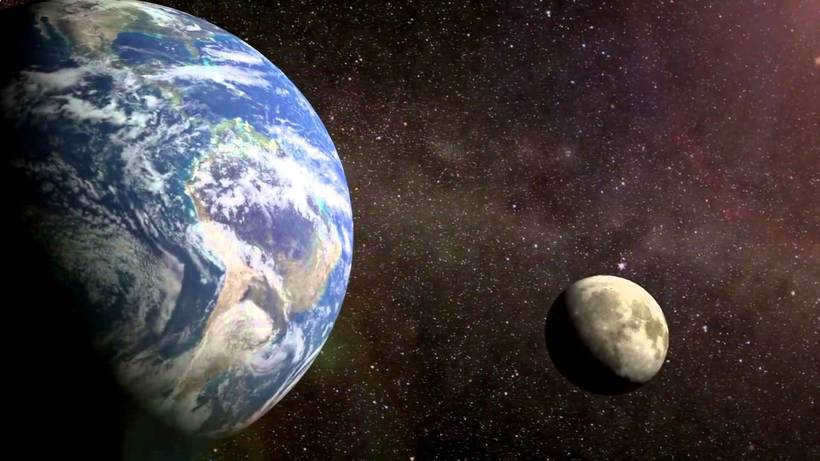
Understanding the Composition of the Earth
The outermost layer of our planet, where humans, animals, plants, water, and mountains coexist, is known as the Earth’s crust. Its thickness can vary in different regions. While it reaches a maximum of 15 km beneath the ocean waters, it can extend up to 75 km beneath the continents. This depth is seemingly insurmountable for humans, unless they develop an exceptionally powerful drilling apparatus. However, in the grand scheme of things, the Earth’s crust is quite thin. To put it into perspective, if we liken the Earth to an orange, the peel of the citrus fruit is thicker than the Earth’s crust.
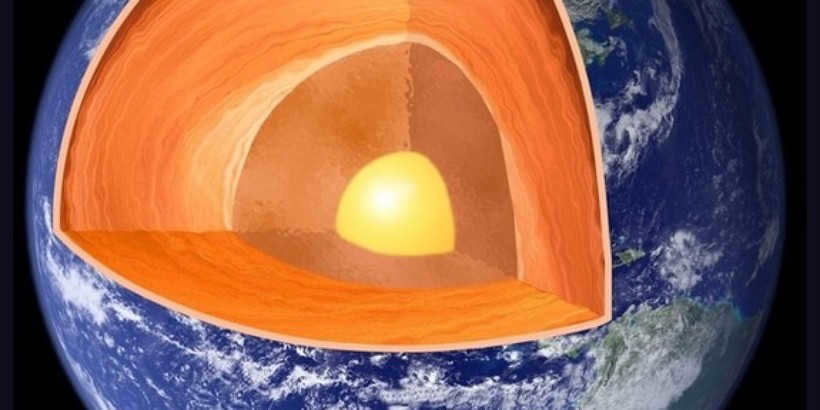
The following information pertains to the Earth’s composition in sequential order.
- The mantle encompasses the Earth’s core. It is a dense layer consisting of solid rocks. The mantle is divided into two sections and has a total thickness of nearly 3000 km.
- Magma constitutes the second portion of the mantle and is approximately 2000 km thick. The upper portion of the magma has a temperature of 2000 degrees, while closer to the core, it reaches about 5000 degrees.
- At the heart of our planet lies the core, which is split into two parts: the outer core and the inner core. The outer core, consisting of liquid material, can reach scorching temperatures of up to 5000 degrees Celsius. On the other hand, the inner core takes the title of being the hottest and densest region on Earth. Composed of iron and nickel, this solid core can reach astonishing temperatures of 10,000 degrees Celsius. Despite the intense heat, the inner core remains solid due to the immense pressure it experiences.
What is the discovery story behind the Earth’s core?
In my opinion, it is difficult to fully believe the scientists’ claims regarding the existence of the Earth’s core. The core is said to be located 6000 km beneath the surface, while humans have only managed to reach a mere depth of 13 km.

Scientists have successfully determined the mass of the planet, which is 59 and twenty zero tons, although there are no visible indications on the surface. Additionally, the average density of the planet is 5500 kg/m³, suggesting a significant presence of iron in Earth’s composition, though it may not be as apparent on the surface. This discrepancy likely led to the hypothesis of a core.
Lately, I have been pondering the composition of the Earth. It reminded me of what we learned in 6th grade! But what are the individual “layers” that comprise our planet?
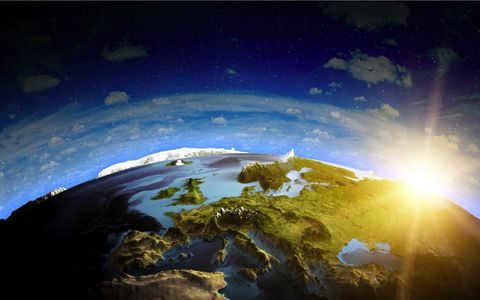
Currently, we have knowledge that our planet is made up of 5 distinct layers:
Now, let’s discuss the structure in more detail. The Earth’s crust is located at a depth of up to 35 kilometers, and it represents the thinnest part of our planet’s composition. Below the crust lies the mantle, which acts as a protective covering for the core. And speaking of the core itself, it reaches temperatures ranging from 4000 to 5000 degrees Celsius!
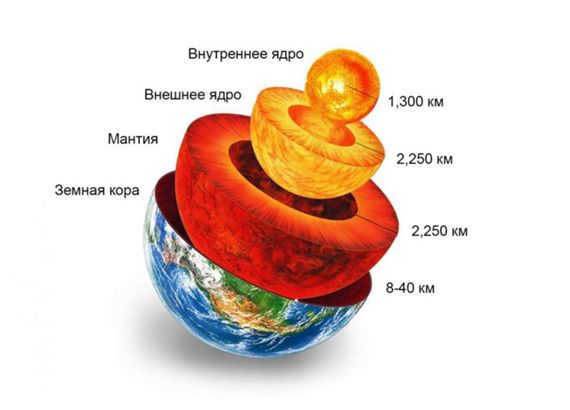
It can be stated that our planet bears a resemblance to a matryoshka doll. Could it be possible that the individuals who crafted the matryoshka doll traveled to the future and were aware of the composition of the Earth?
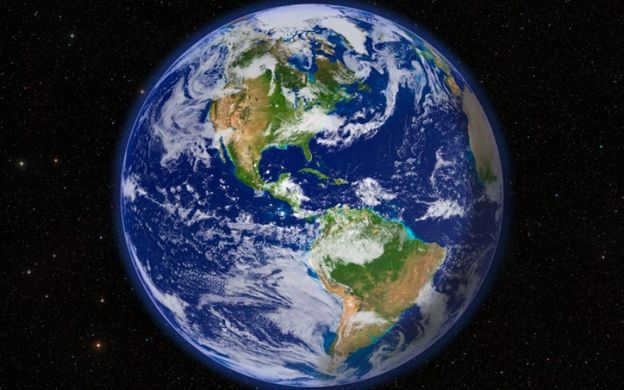
Currently, humanity has only managed to explore the Earth’s mantle, with all other layers remaining mere theories that exist only on paper.
Whenever I contemplate the intricacies of our world, I am in awe of the equilibrium and, dare I say, the elegance of its design. That is, of course, if the internal structure of the Earth was indeed the result of intentional planning.

Who were the pioneers of studying the Earth’s structure?
When delving into any topic, it is always intriguing to explore its origins. In the case of understanding the Earth’s “insides,” one might wonder where the study of this subject began. Surprisingly, early scientists initially believed that the inner part of our planet was filled with water. They envisioned it as a vast aquatic sphere, with humans residing on its surface. One such scientist was Edmund Halley, who lived an impressive eighty-five years, spanning from the mid-seventeenth to the mid-eighteenth century. Halley hypothesized that the Earth was hollow internally, envisioning a luminous inner sphere that could potentially be inhabited. He even attributed the phenomenon of the northern lights to the emission of inner “light.”
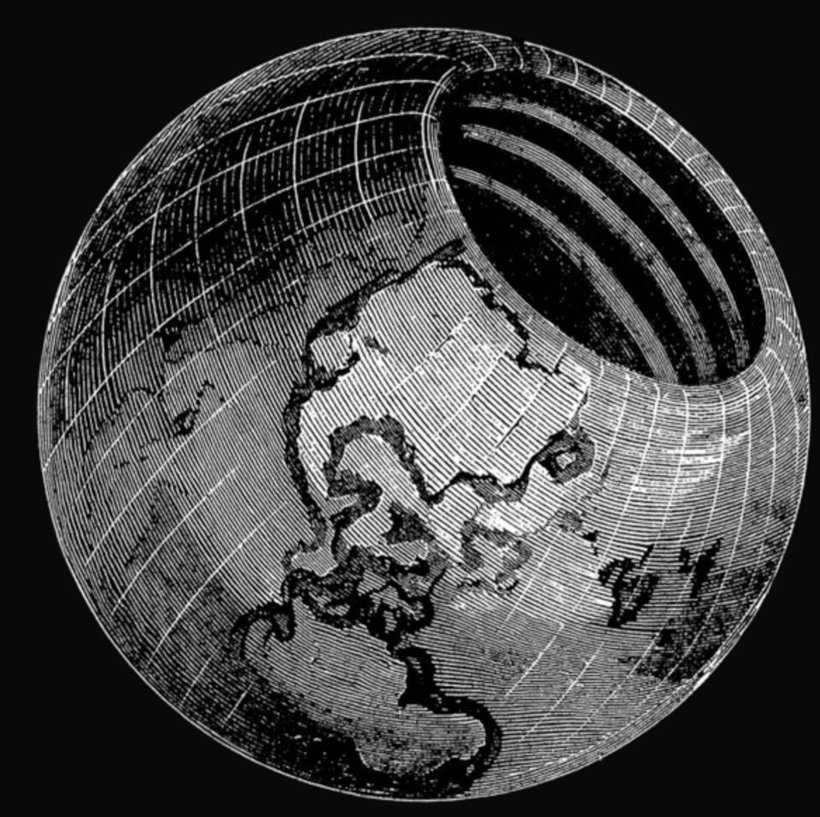
Current Knowledge on the Internal Composition of Earth
In the present era, scientists have made significant progress beyond Halley’s research and now adhere to the following model of Earth’s internal structure.
- Earth’s crust.
- The outer mantle.
- The inner mantle.
- The outer core.
- The inner core.
The Earth’s crust is incredibly thin, thinner even than the skin of a peach. Below the crust lies the mantle, a word derived from the Greek term for “covering”. While the upper portion of this protective layer is believed to be solid, the region closer to the planet’s core is more flexible and is known as magma. Beyond the mantle lies the core, with the inner core being the hottest and most dense part of our planet. Surrounding the inner core is the outer core, which exists in a liquid state.
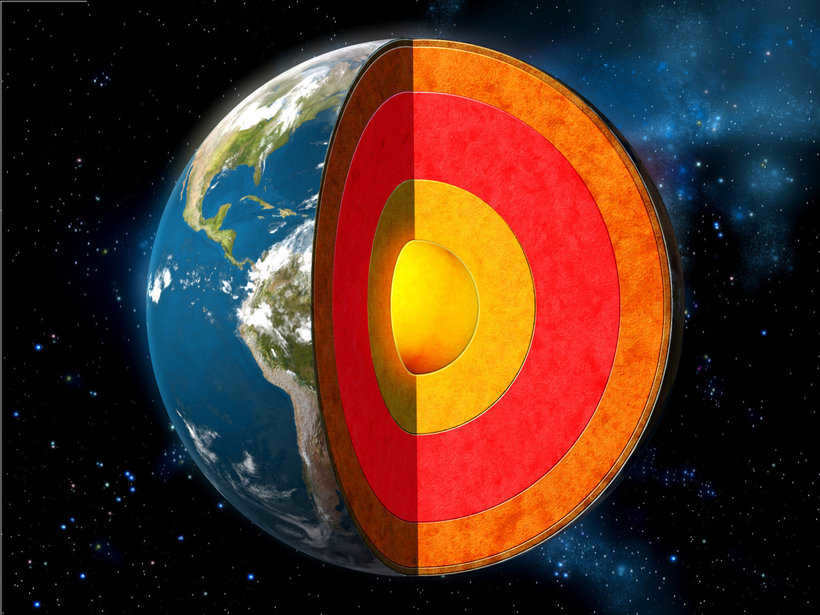
Earth: The Matryoshka Doll
When we examine the structure of the Earth, we discover an intriguing similarity to the iconic Russian matryoshka doll. Isn’t it fascinating? It makes us wonder if the creators of the matryoshka dolls were already aware of the Earth’s organization. However, unlike these dolls, the Earth’s elements are not perfectly aligned; in reality, they are irregular and imperfect, with only pictures portraying them as flawless circles.
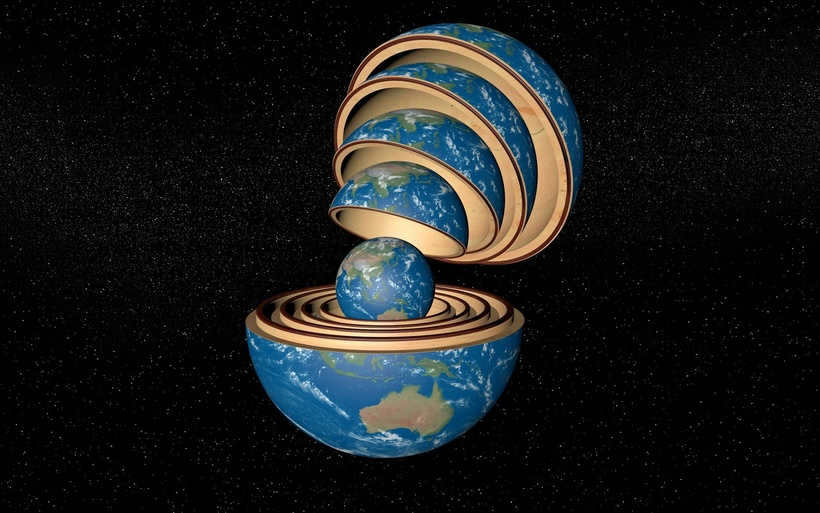
Until now, humanity has only scratched the surface and made some progress in understanding the mantle, which occasionally reveals itself. Everything else is so deeply concealed that these “nesting dolls” are only explored in theory.
The yearning to conquer the uncharted realms of interplanetary space fuels young boys’ aspirations to become astronauts and motivates scientists to continue their research and development. My viewpoint differs from that of modern science, as I believe that the first step is to fully comprehend and appreciate the Earth. Before delving into the issue of our lack of knowledge about the Earth’s interior, let’s first examine its structure.
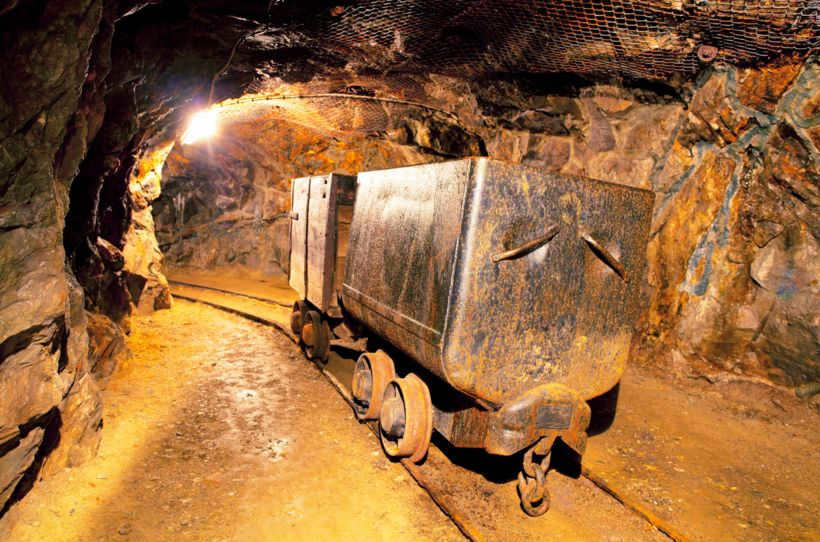
Understanding the Composition of the Earth
The Earth’s internal structure is far more complex than a simple disk or hollow sphere. It is uniquely designed to support an atmosphere and withstand the gravitational forces exerted by the Sun.
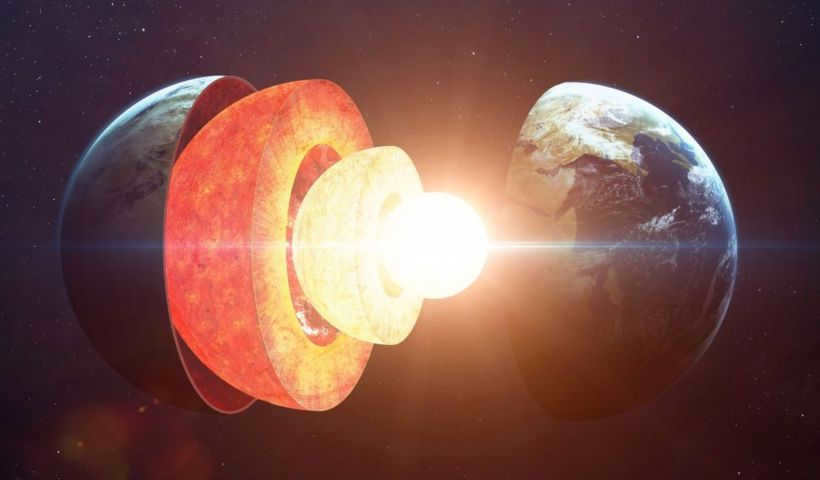
Here is a depiction of the Earth’s internal structure:
- The central part, known as the core, is the heaviest element of the structure. Its outer layer is located at a depth of 3000 km and has not been thoroughly explored;
- The mantle consists of boiling Earth matter known as magma. When this magma erupts from a volcano, it is referred to as lava;
- The crust is the outer shell that formed through the interaction between the mantle and the atmosphere.
Collectively, these three components form the Earth’s globe.
Development of Earth’s Structure
Millions of years ago, our planet was a frigid asteroid floating in space. However, as it traveled around the Sun, it gathered other celestial bodies, gradually growing in size. The additional mass resulted in immense pressure building up inside the planet, causing the core temperature to soar and triggering the melting of surrounding layers.
As the temperature rose, water vapor and gases were forced to the surface, giving rise to the formation of the atmosphere. The first rainfall occurred, cooling down the mantle and leading to the creation of Earth’s crust.

The lithosphere comprises of various types of rocks, including igneous, metamorphic, and sedimentary rocks. The crust of the ocean floor primarily consists of igneous rocks. On the other hand, metamorphic and sedimentary rocks are formed through the prolonged physical and chemical processes of the external environment.
The depths of the Earth still hold numerous mysteries, and our theoretical understanding of them can sometimes be misleading. The Kola well research serves as another testament to this fact.
Every day, I gaze at the starry sky and ponder about the vastness and uncharted territories of outer space. However, in this instance, I would like to shift our focus inward and explore the internal structure of our planet.

The Earth’s Core: A Closer Look
Everyone is aware that our planet is spherical in shape, composed of distinct layers with varying chemical properties. Thanks to a combination of topographic data, rock observations, seismic wave analysis, and experiments, we have a better understanding of the Earth’s internal structure.
- Topographic data provides insights into the planet’s surface.
- Observations of rocks, extracted from the Earth’s depths, also contribute to our knowledge.
- Seismic wave analysis helps us map the Earth’s interior.
- Various experiments under conditions resembling those found in the planet’s core offer further insights.
The core, situated below the mantle, represents the innermost and most profound section of the planet. Let me emphasize that its depth measures 2900 kilometers, while its radius extends to 3500 kilometers. Considering the arduous task of reaching the core, there exists a scarcity of information regarding its composition and characteristics.
The Crust of the Earth
The Earth’s crust is the outermost layer and forms part of the lithosphere. It is mostly covered by water, making up the hydrosphere, with the remaining area dependent on the atmosphere. The structure of the Earth’s crust is similar to that of other planets, except for Mercury. What sets the Earth’s crust apart is its ability to be both oceanic and continental. It is important to note that the Earth’s crust is in constant motion, experiencing various horizontal movements. Additionally, it is worth mentioning that the crust represents less than half a percent of the planet’s total mass.
Even from a young age, I was always curious about what lay beneath our feet. It was during this time that I first discovered the wonders of the Earth’s depths, thanks to a scientific program I watched on TV. The information presented in that program both shocked and amazed me. At that age, my mind wasn’t quite prepared to comprehend such profound truths. In the following week, I took it upon myself to enlighten everyone I encountered, from my parents to strangers on the street, about the intricacies of the Earth’s internal structure. And now, I hope to astound you as well, in case there’s anything that catches you off guard.
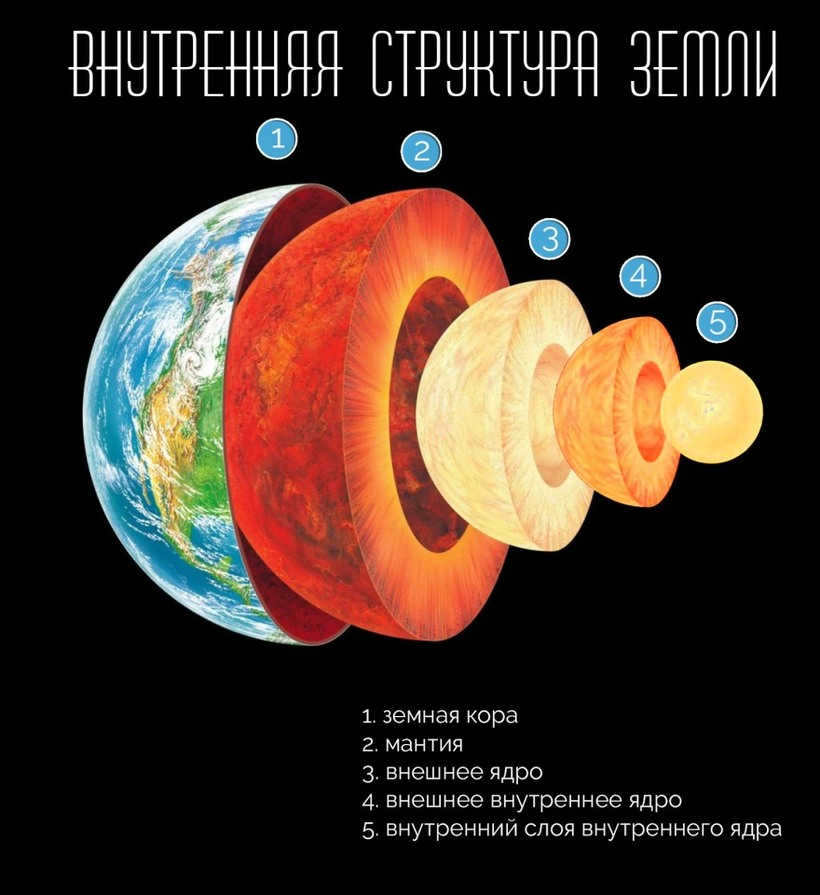
Unveiling the Secrets of the Earth’s Core
In an age of remarkable technological advancements and a growing fascination with outer space, our own planet remains a mysterious enigma. The inner workings of the Earth’s core are still shrouded in uncertainty. While we may not have all the answers, it would be remiss to assume that we know nothing about our home. Centuries of human existence have provided us with valuable insights, and thanks to the tireless efforts of modern scientists, we now have a glimpse into the depths below:
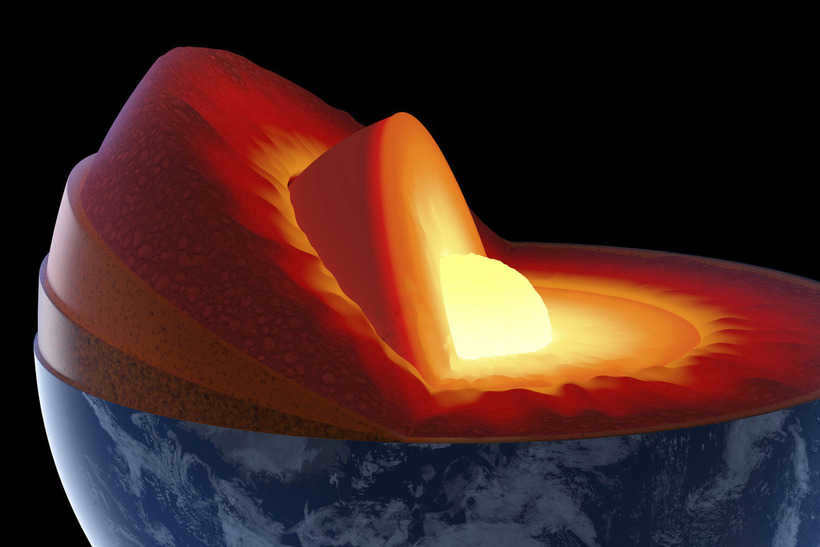
- The Earth’s core is situated at the center of the planet, at a depth of 3000 to 6000 kilometers. It consists of two main layers: the inner solid core, which has an enormous temperature of approximately 5000 degrees, and the outer core, composed of rotating streams of nickel and iron that generate the Earth’s magnetic field.
- The mantle is the largest component of our planet, accounting for 80% of its total volume. It is mostly solid but constantly in motion. As the mantle gets closer to the core, it becomes more fluid, while closer to the Earth’s crust, it solidifies into lithospheric plates.
- The Earth’s crust is the topmost and thinnest layer, with a thickness ranging from a few kilometers to a few dozen kilometers. It is essentially the surface on which we walk.
The significance of understanding the Earth’s composition
Acquiring knowledge about the Earth’s layers and their constituents holds considerable importance for scientists across various disciplines.
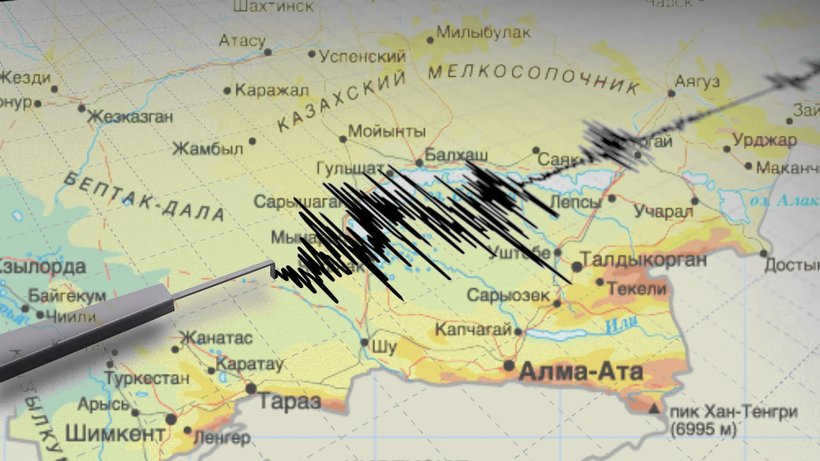
Seismologists rely on it to detect and pinpoint potential earthquakes and volcanic eruptions. Geologists utilize this knowledge to locate valuable mineral deposits and identify suitable areas for construction. And, out of sheer curiosity, individuals are always intrigued by the unknown.
Even at a young age, I developed a keen interest in understanding the inner workings of our planet. I approached these “fundamental” questions with great depth, wanting to comprehend why things were the way they were and not otherwise, how they functioned, and the consequences that followed. So, when my parents and I sat down to watch Journey to the Center of the Earth, I couldn’t simply enjoy the movie. Instead, I ended up giving them a lecture on why it was theoretically impossible for such an event to occur. Poor Jules Verne’s work was completely shattered. 🙂
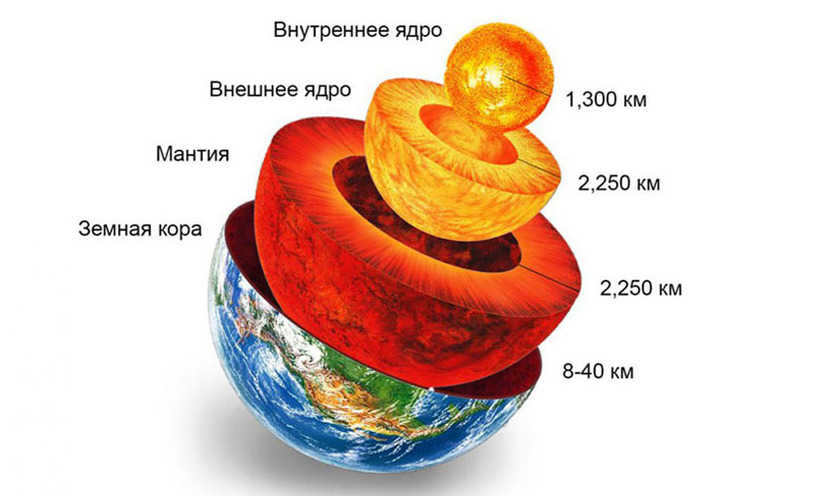
The composition of the Earth’s inner workings
Scientists can only speculate and hypothesize about what lies deep within the planet. It is evident that the temperatures are extremely high, to the point where no drill can withstand them. Furthermore, it is impossible for scientists to descend into the depths and witness the boiling and bubbling themselves. However, through studying volcanoes and analyzing the propagation of seismic waves during earthquakes, scientists have been able to gain a relatively accurate understanding of the Earth’s structure:
- The central part. It is located right at the center and consists of two sections: the solid inner core (despite the extreme temperature of 6000 degrees Celsius, it remains solid due to the gravitational force compressing it from all directions) and the liquid outer shell. In comparison to the planet’s diameter (12750 km), the core’s size is impressive – approximately 7000 km.
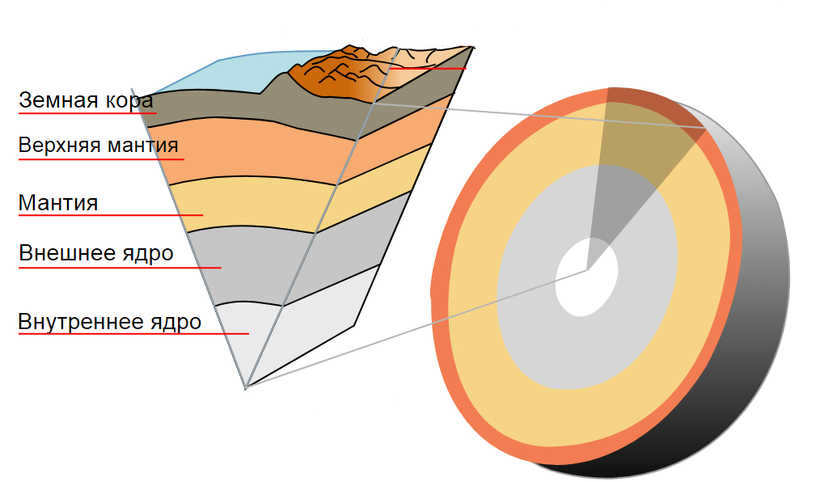
- The mantle serves as the following layer of the “Earth” sandwich. It is sufficiently malleable, allowing for lithospheric plates to move across it and occasionally emerge in the Earth’s crust’s faults.
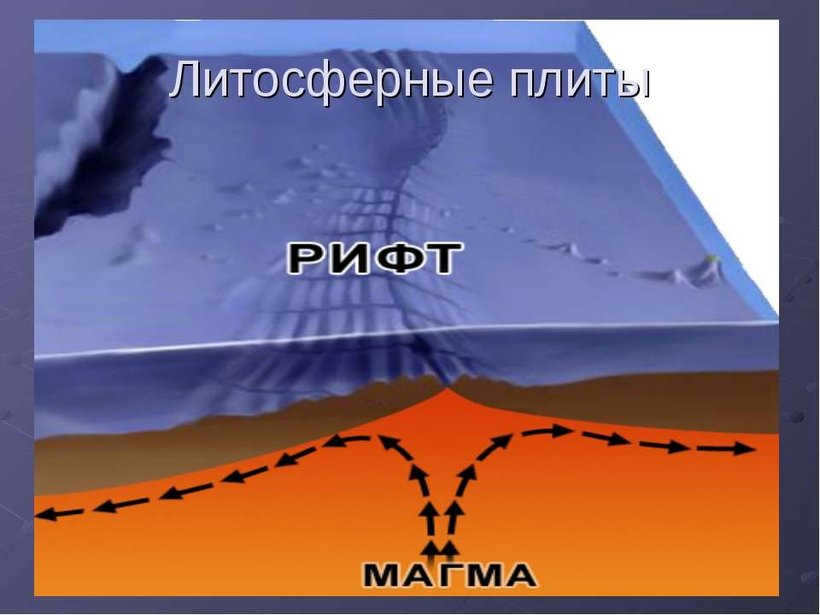
- The crust is essentially the surface we walk on, where the seas and oceans reside, and what can be referred to as the “solid” part.
Generally speaking, all of these layers are fairly standard. For instance, scientists can “divide” the mantle into five additional layers based on their various mechanical properties: the lower mesosphere, the upper mesosphere, the asthenosphere, the mantle itself, and its upper part.
Methods of Investigating the Earth’s Structure
There are numerous techniques and approaches for studying the internal workings of the planet. For example, by understanding the gravitational force, it becomes possible to calculate the Earth’s volume and density. By examining the composition of rocks, we can make certain inferences about the chemical composition of the “inner workings”.
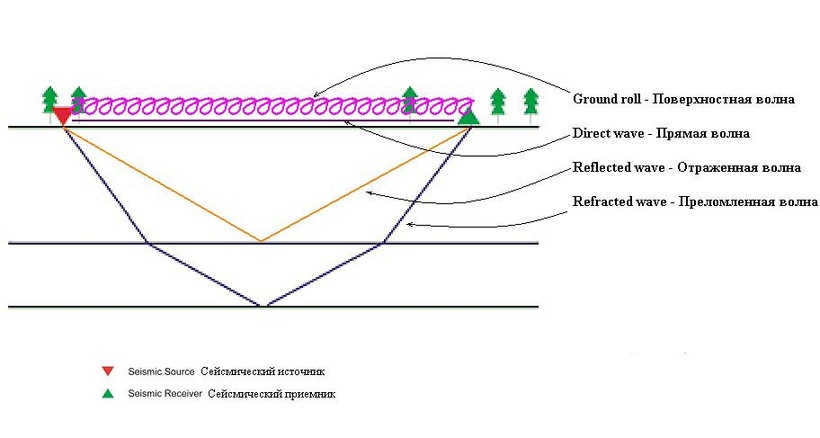
And through analyzing the variations in seismic wave propagation, scientists can identify the boundaries between different inner layers. However, these methods are considered “indirect” and cannot provide comprehensive information.
The inner structure of the Earth is not as well-explored as outer space or oceans. If we were to compare the Earth to an apple, the deepest borehole would only penetrate its skin. What are the components that make up the Earth’s internal structure? How did scientists uncover this knowledge? What exactly is the lithosphere? Let’s delve into the depths of our planet together.
Techniques for Investigating the Internal Structure of the Earth
Scientists have developed various methods to explore the inner depths of the Earth. One approach involves drilling, although this technique is complex, time-consuming, and not particularly efficient. The deepest well ever drilled, known as the Kola ultra-deep well, only reaches a depth of 12,263 meters. While this may seem deep, it is insignificant compared to the distance to the Earth’s core.
The Kola Experimental Support Superdeep Borehole holds the record as the deepest mining operation globally and is of great scientific significance. Situated 15 km east of Nickel village and 12 km west of Zapolyarny town, this borehole was recognized by the Guinness Book of Records in 1997 as the deepest human intrusion into the Earth’s crust, a record that still stands today.
The process of seismic exploration involves detonating explosives on the Earth’s surface and analyzing the resulting waves that propagate through the planet and bounce back off different types of rocks. It has been observed that waves travel at different speeds depending on the composition of the rocks, with sedimentary rocks exhibiting slower velocities compared to granite.
Seismic waves are also generated during earthquakes.
Through the seismic method, researchers have been able to gain insights into the layered structure of our planet.
Meteorites are celestial objects, making them potential remnants of other planets. Consequently, scientists can draw comparisons while analyzing the composition of meteorites.
The primary constituents of meteorite fragments are metals, specifically iron and nickel. From this, it is reasonable to infer the existence of a metallic core within our planet.
The composition of the Earth’s interior
The Earth’s interior is composed of three primary layers:
- The Earth’s crust;
- The mantle;
- The core.
To establish a comparison between the different layers, we can once again turn to the analogy of an apple. Let’s envision the apple as the Earth, with the peel representing the crust, the core symbolizing the core, and the pulp representing the mantle.
The Earth’s Core
Situated at the center of the Earth, the core has a radius of 3500 kilometers. Scientists estimate the core’s temperature to be between 4000 and 5000°C. At its very center, temperatures can reach up to 6000°C.
The outer portion of the core is molten, while the inner part remains solid. It remains a mystery why the outer core maintains its liquid state, as it should theoretically be denser than steel.
Mantle
The layer between the Earth’s crust and core is known as the mantle. It has a thickness of approximately 3000 km and accounts for 83% of the total volume of our planet.
The term “mantle” is derived from the Greek word meaning “blanket” or “cloak”, which accurately depicts its role in covering the Earth’s core.
Despite reaching temperatures as high as 2500 °C, the majority of the mantle’s material remains in a solid crystalline state.
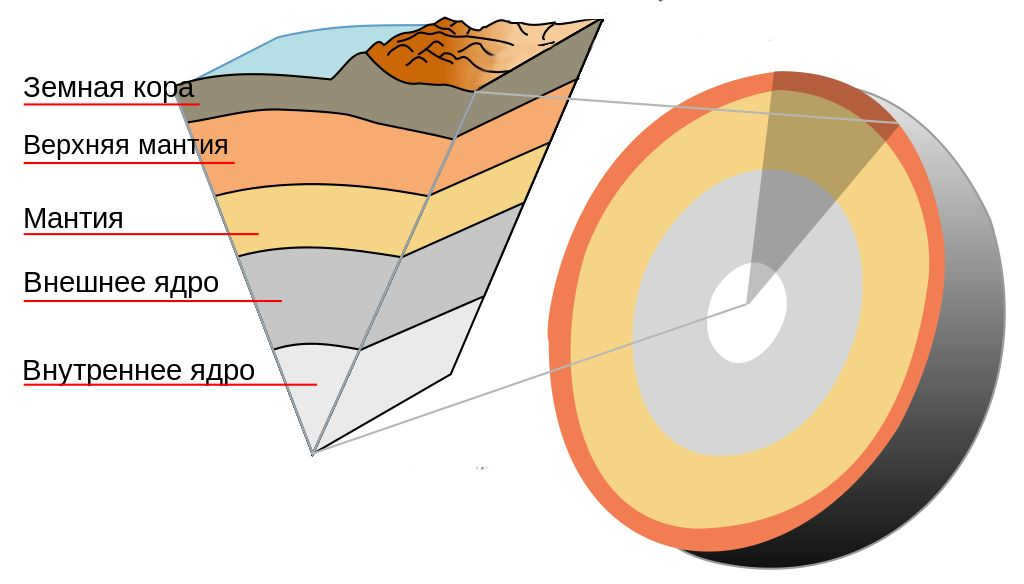
On the upper part of the mantle, there is a distinct thin layer that possesses plastic properties.
The Earth’s Crust
The Earth’s crust is the uppermost layer of the Earth, which is thin and solid. It has a thickness ranging from 5 to 75 kilometers.
As we go deeper into the Earth’s crust, the temperature increases. This is primarily caused by the decay of radioactive elements, which releases heat. From a depth of approximately 25 kilometers, the temperature rises by 3 °C for every 100 meters. At the boundary with the mantle, it can reach up to 600 °C.
Continental and oceanic crust
There is a significant variation in the thickness of the Earth’s crust beneath the continents and the oceans, which allows us to distinguish between continental and oceanic crust.
The continental crust is composed of three layers:
The layers are conventionally named granite and basalt, and seismic waves behave similarly in these layers as they do in granite and basalt.
The continental crust is approximately 30-40 km thick on the plains and can reach up to 75 km in mountainous regions.
The oceanic crust is thinner compared to the continental crust, with a thickness of 5-10 km.
The oceanic crust does not contain a granite layer and is composed solely of sedimentary and basaltic layers.
The thickness of the earth’s crust gradually decreases at the boundary between continents and oceans.
Lithosphere
Lithosphere is the solid shell of the Earth, composed of the Earth’s crust and the upper part of the mantle.
The lithosphere has a varying thickness of 50 to 200 km.
The lithosphere is made up of separate rigid, stable, and slowly moving blocks known as lithospheric plates. Massive faults exist between these blocks.
The Motion of Lithospheric Plates
The lithospheric plates undergo slow movement (with an average rate of 5 cm per year) within the pliable layer of the mantle.
While the majority of lithospheric plates are continental in nature, there are also oceanic plates. These lithospheric plates can either collide or diverge from each other.
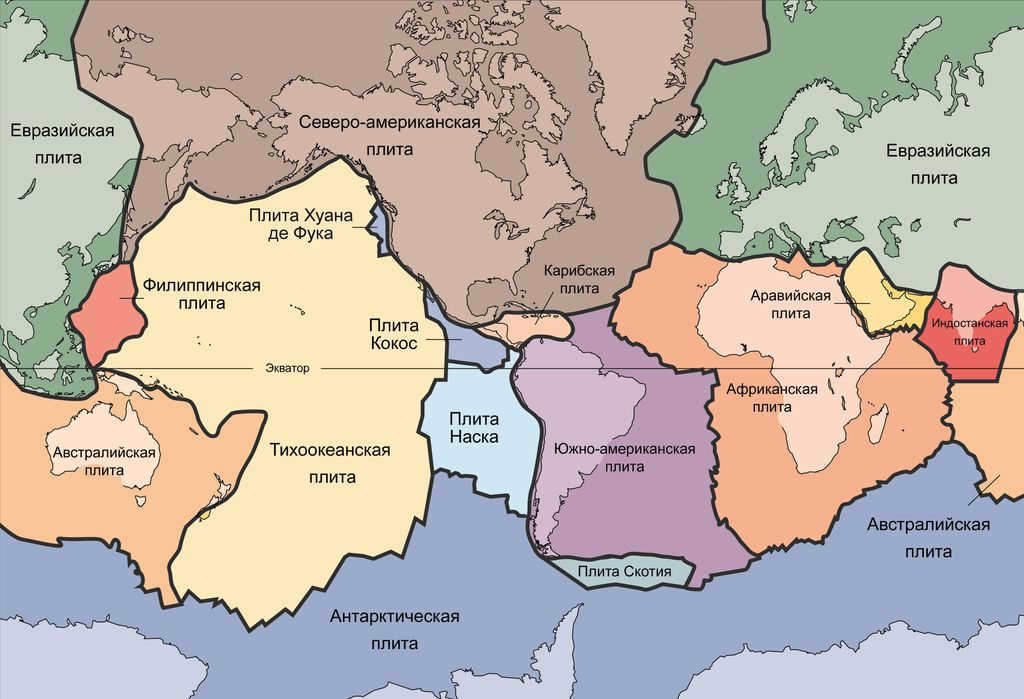
Alfred Wegener observed that the contours of certain continents align. For instance, the eastern shoreline of South America could be assembled like a puzzle piece with the western shoreline of Africa.
Wegener formulated a hypothesis that in the ancient past, all continents were united as a single massive landmass called Pangaea. Approximately 200 million years ago, it fragmented and over time, the present-day continents emerged from its remnants.

Wegener’s initial hypothesis was later expanded upon and developed into what is now known as the “Theory of Lithospheric Plates”.
Frequently asked questions
The Earth is composed of three main layers: the crust, mantle, and core.
Our understanding of the deep structure of the Earth has largely been obtained through the study of earthquakes and controlled explosions. These events produce waves that travel through the planet at varying speeds, allowing us to identify different layers composed of materials with varying densities.
There are two main types of crust on Earth: oceanic and continental. Continental crust is thicker and consists of three layers: sedimentary, granite, and basalt. Oceanic crust is thinner and lacks a granite layer.
The lithosphere refers to the rigid outer shell of the Earth, which includes both the crust and the upper portion of the mantle.
Lithospheric plates are situated atop the pliable layer of the mantle, allowing for their movement within it. The average rate of motion for these plates is approximately 5 centimeters per year.
What is the estimated surface temperature of the Earth’s inner core?
The Earth’s core constitutes the central and deepest region of our planet, lying beneath the Earth’s mantle within the geosphere. With a depth of 2900 kilometers, the core is enclosed by a sphere with an average radius of 3500 kilometers. It consists of a solid inner core, comprising approximately one-third of the entire core’s thickness, and a liquid outer core, with a transition zone sometimes identified between them. The core possesses a mass of 1.932 x 10^24 kilograms.
The deepest part of the Earth’s geosphere is known as the inner core, with a radius of approximately 1220 km (based on seismological studies). This radius is comparable to about 70% of the Moon’s radius. Scientists believe that the inner core is primarily composed of iron and nickel alloys, along with some traces of other siderophilic elements. Unlike the liquid outer core, the inner core exists in a solid state due to the extreme pressure it experiences. Some theories suggest that the inner core may not be crystalline, but rather in a unique state similar to amorphous, with its elastic properties resulting solely from pressure. The inner core is estimated to have started crystallizing around 2-4 billion years ago.
Here are the key parameters of the Earth’s inner core:
– The surface temperature of the solid core is believed to be around 5700 K (5400 °C).
– The density at the center of the core could potentially reach 14.3 g/cm³ (although some sources suggest 13.1 g/cm³),
– The pressure at the center of the core is estimated to be up to 361 GPa (equivalent to about 3.7 million atmospheres or 3.8 million bar):
– The velocity of longitudinal waves in the core can reach up to 11.2-11.3 km/second;
– The force of gravity approaches zero.
However, our knowledge about the core is limited – all information is gathered through indirect geophysical or geochemical methods (even the core’s existence was confirmed through the refraction and reflection of longitudinal seismic waves). We do not have any samples of core material.
What causes the Earth’s core to maintain its high temperature?
The Earth has been in existence for over 4.6 billion years, and despite its age, the surface has not cooled down and continues to exhibit remarkable activity.
The internal heat of numerous planets is sustained by nuclear reactions, specifically radiogenic processes. In the case of our planet, the Earth, these processes are primarily driven by the decay of isotopes such as uranium, thorium, and potassium..
What is the cooling time for a rock? Especially if it is as large as a planet?
Millions. And even billions of years should be sufficient for it to cool and solidify completely. This is based on our intuition and supported by the unyielding second law of thermodynamics. We are all aware that every object releases heat into its surroundings, and every fire eventually extinguishes.
However, despite common sense, there appears to be a perpetual warmth deep within the Earth’s crust. Thus, let us examine the fundamental nature of our planet.
The liquid rock beneath our feet continuously rises, releasing some of its heat, then thickens and descends back towards the core.
One might think that this process should have cooled our planet long ago and led to its geological demise. Could it be that the planets are slowly losing the energy they obtained during their violent birth? The answer is yes. However, this wouldn’t be possible without their own independent source of energy in the form of nuclear reactions. Let me clarify (as there seems to be some confusion): we are not referring to thermonuclear processes, which involve the fusion of atomic nuclei commonly found in stars.
Planets lack the necessary mass (or fuel) to sustain fusion. However, they contain impurities of heavy radioactive isotopes that easily decay, releasing energy.
Curious readers may wonder how we know about nuclear reactions that occur outside of our field of vision. It is indeed unusual, as most geologic models today were created using neutrino detectors, specifically electron antineutrinos. These small, penetrating particles are often associated with cosmic sources such as solar neutrinos, but they are also emitted during certain nuclear decays.
In 2005, a group from Japan’s KamLand detector started detecting these geoneutrinos, allowing them to conduct a comprehensive study of the processes happening within our planet. As per the current model, nuclear decay is responsible for generating approximately 20 terawatts of energy, with uranium-238 decay contributing around 40% of this total, thorium-232 decay accounting for another 40%, and potassium-40 decay making up the remaining 20%.
Firstly, there is still room for debate regarding our understanding of the Earth’s heat balance. While radioactivity is a significant force, it is unlikely to be solely responsible for all the energy generated.
Secondly, isotope decays occur in the Earth’s mantle but not in the core. According to physicists and geologists, uranium, thorium, and potassium are essentially absent from the Earth’s core, meaning that all radiogenic heat must ascend to slightly higher levels.
What is the accurate response to the question in the title?
It appears that the nucleus is essentially generating the initial warmth, which is a remnant from the planet’s formation. Nonetheless, it has not cooled down due to being enshrouded in a dense layer of liquid rock. continuously warmed by radioactive decay. Thus, the mantle can be regarded not just as a covering, but more like an electric blanket with its own heating element.
Is it possible for the Earth to never freeze?
Certainly not, however, the Earth’s interior cooling process is exceptionally gradual. Taking into account the rate of heat dispersal and other factors, it would require 55 to 90 billion years for the core to solidify entirely. This is because the Earth’s magnetosphere relies on the high temperature and convection movements of billions of tons of molten iron.
The innermost part of the Earth

The core is present in the structure of every celestial body. Typically, it consists of multiple layers, serving as a foundational element for the spherical planet. The core is composed of unique substances that possess remarkable properties. For instance, deep within the central region of the planet, iron can undergo crystallization or exist in a liquid form.
The deepest central region of the Earth, located beneath the mantle, is composed primarily of a combination of iron and nickel. This region is divided into two distinct layers.

Investigating the characteristics and makeup of the Earth’s core is a challenging endeavor due to its location 2900 kilometers below the surface. As one delves deeper into the planet’s depths, the temperature progressively rises, leading to the malfunction of electronic devices and technical apparatus.
When passing through the lithosphere, one must overcome the layer of scorching-hot mantle. The deepest drilling ever conducted to reach the center of our planet was carried out on the Kola Peninsula in 1991. This well reaches a depth of 12,262 meters, with temperatures exceeding 200°C. In 2000, a project was proposed to create a probe for exploring the Earth’s interior. However, the creation of this device would require the detonation of multiple nuclear bombs, followed by the pouring of a significant amount of liquid metal into it. Additionally, the probe would need to be constructed from a material capable of withstanding temperatures ranging from +2000°C to +3000°C.
All existing knowledge about the central portion of our planet has been obtained through the observation of seismic wave fluctuations. Scientists also monitor the magnetic field, which enables them to study the rotation of the Earth’s core.
Despite the challenges involved in researching the core of our planet, scientists have successfully determined the physical characteristics of the “heart” of the globe. The primary substance that comprises the central region of our planet is a combination of liquid and crystalline iron. It is also believed by scientists that nickel is present in the composition of our celestial body’s core.

The Size of the Core
The core sphere has an average circumference of 3500 km. The inner solid part has a radius of 1300 km, while the upper liquid layer is approximately 2200 km thick.
Exploring the Earth’s Core
Despite numerous attempts, no one has been able to reach the deepest central part of the Earth. Volcanic lavas only melt at a depth of 220-300 km, and the formation of precious rocks like diamonds does not occur below 500 km. Anything beyond that remains a mystery. However, scientists have used seismology to determine the distance to the Earth’s core.

During seismic events, the Earth experiences powerful shock waves that propagate throughout its entirety. However, when earthquakes occur on one side of the planet, the oscillating waves are dampened on the opposite side. By analyzing this phenomenon, scientists have reached the conclusion that S-waves resonate upon encountering solid and liquid layers.
Upon reconstructing a map of the oscillatory wave movements, researchers have discovered the presence of molten rocks at a distance of 3,000 kilometers.
Mass
According to observations of the gravitational field of our celestial body, researchers have determined that the weight of the Earth is approximately 5.9 sextillion tons (59 20 ). The density of the outer layer is lower than the overall average, suggesting that the planet’s interior is composed of solid and dense rocks. Additionally, the total weight of the liquid layer accounts for approximately 30% of the Earth’s total mass.
The Earth’s Core Temperature
It is common knowledge that the deepest central region of our planet is comprised of two distinct layers: an outer layer of liquid and an inner layer of solid material. Under immense pressure, the temperature between these layers fluctuates between +6000°C and +6500°C, surpassing the heat of the Sun. The outer core, which is hotter, remains in a constant state of heat due to the emission of powerful magma flows that extend towards the surrounding areas and the Earth’s mantle. Through the friction generated between the outer layer and the Earth’s center, the temperature continues to rise. These ongoing processes prevent the cooling of our planet’s “heart.” The Earth cannot cool down in time, resulting in the formation of its inner solid layer from the remnants of cooled and crystallized iron. Scientists hypothesize that over an extended period, the entire central region may solidify, marking the beginning of the end.

Magnetic field
It is common knowledge that a dependable shield against the harmful radiation from the Sun is provided by a magnetic field. This magnetic field is created due to the presence of a liquid layer containing iron and nickel. Furthermore, the outer layer of the Earth’s core generates such intense heat that it leads to the eruption of magma flows through volcanoes. The presence of an active magnetosphere played a crucial role in the development of life on our planet, setting it apart from other celestial bodies.
The Earth’s core has been discovered to have a temperature comparable to that of the Sun
A recent study proposes that the temperature of the Earth’s inner core is much higher than previously believed.
New measurements indicate a temperature of 6,000 degrees Celsius, which is actually equivalent to the surface temperature of the Sun.
The solid core is essentially a crystalline structure surrounded by liquid. The temperature at which this crystal forms has been a topic of ongoing scientific debate.
The experiments, detailed in the journal Science, utilized X-rays to examine minuscule iron particles subjected to extreme pressure in order to examine the process of crystal formation and melting in iron.
Seismic waves, which are measured after earthquakes worldwide, can provide valuable insights into the thickness and density of the earth’s layers. However, unfortunately, they do not offer any information about temperature. To determine temperature, scientists rely on computer modeling or laboratory methods.
X-ray examination
In the early 1990s, measurements taken during the iron melting process allowed scientists to estimate the core temperature. These measurements suggested a temperature of approximately 5,000 degrees Celsius.
"This marked the initial phase of research into these measurements, resulting in a preliminary assessment … in order to construct a general outline of the Earth’s internal temperature," explains Agnes Deval of the French Research Agency and a co-author of the recent study in an interview with BBC News. – Various scientists conducted multiple measurements and computer simulations, revealing a lack of consensus in the data. In our scientific community, it is unfavorable when there is a lack of agreement among colleagues."
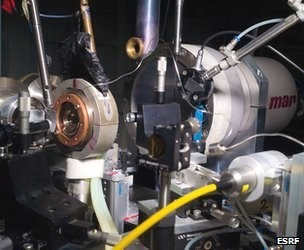
The iron particles underwent extreme pressure before being examined using X-ray technology. Image from esrf.eu
Determining the temperature of the Earth’s core is of utmost importance for various scientific disciplines and fields that investigate different aspects of the internal structure of our planet, particularly those that are currently inaccessible. Having an accurate measurement would be crucial for understanding a wide range of phenomena, from the behavior of earthquakes to the Earth’s magnetic field.
“Our findings are invaluable for geophysicists, seismologists, and researchers in geodynamics. They rely on data that can be used to enhance their computer models,” Deval assures.
To recreate the immense pressure found only at the Earth’s core boundary – a pressure a million times stronger than the depths of the ocean – scientists utilized a device known as a “diamond press.”
By subjecting iron samples to high pressure and temperature using a laser, the scientists employed X-rays for diffraction analysis, observing the transformations in the samples, specifically the transition of iron from a solid to a liquid state.
The diffraction-obtained samples offer further insight into the various stages of iron melting, indicating that the temperature at the Earth’s core is approximately 6,000 degrees Celsius with a margin of error of 500 degrees, similar to the surface temperature of the Sun.
Dr. Deval expresses certainty, stating, “Everything is now in agreement.” However, the research team is persisting in their investigation to enhance the accuracy of the findings.
The interiors of numerous celestial bodies retain their high temperatures as a consequence of nuclear reactions, particularly radiogenic processes. In the instance of our planet, Earth, the primary source of this heat is the gradual breakdown of isotopes such as uranium, thorium, and potassium.
What is the speed at which a rock can cool down? Even if it is quite prosperous, like the size of a planet?
Millions. Not to mention billions of years, which should be more than sufficient to completely cool and solidify it. This is based on our intuition and is supported by the second law of thermodynamics, which is invincible. We all understand that every object emits heat to its surroundings, and every fire eventually goes out.
However, despite common sense, there seems to be a perpetual warmth deep below the Earth’s crust. So let’s examine the fundamental nature of our planet.
A ball made of nickel-iron, with a diameter of 7,000 kilometers, covering almost one-third of the Earth’s total mass, remains constantly illuminated at temperatures exceeding 5,500 degrees Celsius. Over the course of 4.6 billion years, the planet’s interior continues to generate dense terawatts of energy and burns slightly less intensely than the surface of the sun. It is undeniable that heat from the mantle and core is escaping as much as possible, even through the process of convection.
The molten material beneath our feet tirelessly rises, releasing some of its heat, then thickens and begins to descend back towards the center.
It may appear that under normal circumstances, such a phenomenon should have cooled our planet long ago and led to its geological demise. Could it be that the planets are gradually losing the energy that they still possess from their turbulent birth process? It turns out that this is indeed the case. However, this wouldn’t be possible without the assistance of their own self-sustaining energy source in the form of nuclear reactions. It is important to clarify (as I have come across misunderstandings): we are not referring to thermonuclear processes, specifically the fusion of atomic nuclei that occurs within stars.
Curious readers may question how we gather information about nuclear reactions that happen beyond our ability to see. It’s actually quite remarkable, as a majority of contemporary geologic models have been developed through the use of neutrino detectors, specifically electron antineutrinos. While we typically associate these minuscule, penetrating particles with cosmic origins, such as (e.g., solar neutrinos), they are also emitted during various physical processes, particularly specific nuclear decays.
In 2005, the KamLand detector team from Japan embarked on the task of capturing geoneutrinos, which allowed them to conduct a comprehensive analysis of the Earth’s internal phenomena. Based on the existing model, nuclear decay produces approximately 20 terawatts of energy, with uranium-238 decay contributing to around 40% of that, thorium-232 decay accounting for another 40%, and potassium-40 decay making up the remaining 20%.
It is important to take note of two additional pieces of information.
Firstly, our understanding of the Earth’s heat balance is not yet comprehensive and allows for further discussion. Although radioactivity is a significant force, it is unlikely to account for all of the energy generated. Secondly, the decay of isotopes only occurs in the mantle of our planet, not in the core. According to physicists and geologists, uranium, thorium, and potassium are nearly absent from the Earth’s core, which means that all radiogenic heat must rise slightly higher.
So what is the right response to the inquiry in the title?
It appears that the nucleus is essentially generating the initial warmth, which is a remnant from the planet’s formation. Nonetheless, it has not cooled down because it is still enveloped in a dense layer of molten rock that is continually being heated by nuclear decay. As a result, the mantle can be viewed not merely as a typical covering, but as an electric blanket with its own heat source.
Definitely not, however, the cooling process of its interior is remarkably sluggish. Considering the pace of heat dissipation and all other factors, it would require 55 to 90 billion years for the core to solidify entirely. This is due to the elevated temperature and convection movements of billions of tons of melted iron, which are essential for the Earth’s magnetosphere to exist.
The center of the Earth

Each celestial body possesses a core within its composition. Typically, this core is composed of multiple layers, serving as a fundamental structure for the spherical planet. The substances contained within the core exhibit extraordinary properties. For instance, iron, which exists at significant depths within the central region of the planet, undergoes transformations into crystalline forms or remains in a liquid state.
The inner core, located beneath the Earth’s mantle, is the most profound central region on our planet. It is predominantly composed of an alloy of iron and nickel, and is divided into two distinct layers.

Investigating the characteristics and makeup of the Earth’s core presents a complex challenge due to its location at a depth of 2900 kilometers. As one delves deeper into the planet, the temperature rises with each kilometer, leading to the malfunction of electronic devices and technical tools.
In order to traverse the lithosphere, one must first overcome the layer of scorching hot mantle. The deepest drilling ever conducted to reach the center of our planet took place on the Kola Peninsula in 1991. This well reached a depth of 12,262 meters and encountered temperatures exceeding 200°C. In the year 2000, a project was developed to create a probe capable of exploring the depths of the Earth. However, constructing such a device would require the detonation of multiple nuclear bombs and the infusion of a large quantity of liquid metal. Furthermore, the probe would need to be constructed from a material capable of withstanding temperatures ranging from +2000°C to +3000°C.
All existing knowledge about the Earth’s inner core has been obtained through the observation of seismic wave fluctuations. Scientists also closely monitor the planet’s magnetic field, which provides insights into the core’s rotational patterns.
Composition and structure
Despite the challenges associated with researching the innermost region of our planet, scientists have successfully determined the physical properties of Earth’s “core.” The central portion of our planet primarily consists of liquid and crystalline iron. Additionally, it is believed that nickel is also present at the core of our celestial body.

Diameter
The mean perimeter of the central sphere measures 3500 kilometers. The inner solid portion has a radius of 1300 kilometers. The upper liquid layer has a maximum thickness of 2200 km.
No one has been able to reach the deepest central part of the celestial body yet. The lavas of erupting volcanoes melt at a depth of 220-300 km, and the formation of precious rocks (diamonds) does not happen below 500 km. Anything beyond that remains a mystery. However, scientists have discovered a method to determine the distance to the Earth’s core using seismology.

Powerful shock waves are generated around the world during earthquakes. These vibrations have the potential to travel across the entire globe. However, when earthquakes occur on one side of the planet, the oscillating waves are effectively dampened on the opposite side. Upon analyzing this data, scientists have deduced that S-waves resonate when they encounter solid and liquid layers.
Upon reconstructing a map of the oscillating wave movements, experts have discovered the presence of liquid rocks at a distance of 3000 km.
Mass
By studying the gravitational field surrounding our celestial body, scientists have deduced that the weight of the planet is approximately 5.9 sextillion tons (59,000,000,000,000,000,000). The density of the outer layer is lower than the overall average, suggesting that the planet’s interior is comprised of solid and dense rocks. The combined weight of the liquid layer is equivalent to 30% of the planet’s total mass.
The Earth’s core temperature
It is common knowledge that the deepest central part of our planet is composed of two distinct layers: an outer liquid layer and an inner solid layer. Sandwiched between the two layers is an incredibly high temperature range, fluctuating between +6000°C and +6500°C, under a staggering pressure of 3.3 million atmospheres. Surprisingly, this temperature range is even hotter than the Sun itself. The outer core, being the hotter of the two layers, manages to maintain its high temperature due to the constant generation of powerful magma currents that extend towards the mantle’s surface. As the outer layer rubs against the Earth’s center, friction causes the temperature to rise. These ongoing processes effectively prevent the “heart” of our planet from cooling down. Instead, the inner solid layer is formed from the cooled and crystallized remnants of iron. Scientists theorize that, over time, the entire central section may solidify, marking the beginning of the end for our planet.

Magnetic Field
A magnetic field is a well-known and effective defense mechanism against the harmful effects of solar radiation. This powerful force is generated by a liquid layer consisting of iron and nickel. Moreover, the outer layer of the Earth’s core is responsible for heating up the mantle to such an extent that it leads to the eruption of magma flows through volcanoes. The presence of an active magnetosphere played a crucial role in the emergence of life on our planet, setting it apart from other celestial bodies.
The Center of the Earth
The Earth’s core, like any other spherical celestial body, is believed to exist. Researchers have confirmed that the core of our planet is composed of multiple layers. However, comprehensively studying all aspects and characteristics of the core is an immensely challenging, if not impossible, task. Consider that the distance from the Earth’s surface to the upper section of the core is approximately 2900 kilometers! Moreover, the temperature in that region reaches several thousand degrees Celsius!
At present, the Kola well holds the record for being the deepest well ever drilled at 12 kilometers. Even at this depth, the temperature rises to 220 degrees Celsius. It is impossible for any electronic devices to function effectively under such extreme heat.
Some properties of the nucleus.
Nevertheless, scientists have successfully determined several specific properties and characteristics of the core of the Earth through various indirect indicators.
- The temperature at the core’s center is approximately 6,000 degrees Celsius, which matches the surface temperature of the Sun.
- The pressure within the core surpasses atmospheric pressure by a staggering 3.5 million times! That equates to roughly 360 gigapascals.
- The Earth’s core spans approximately 7,000 kilometers in diameter, surpassing the sizes of both the Moon and Mars.
- The core occupies 15% of the Earth’s total volume.
- The weight of the core is 1.932 x 10^24 kilograms, accounting for approximately 30% of the Earth’s overall mass.
- The core consists of three layers that rotate in different directions.
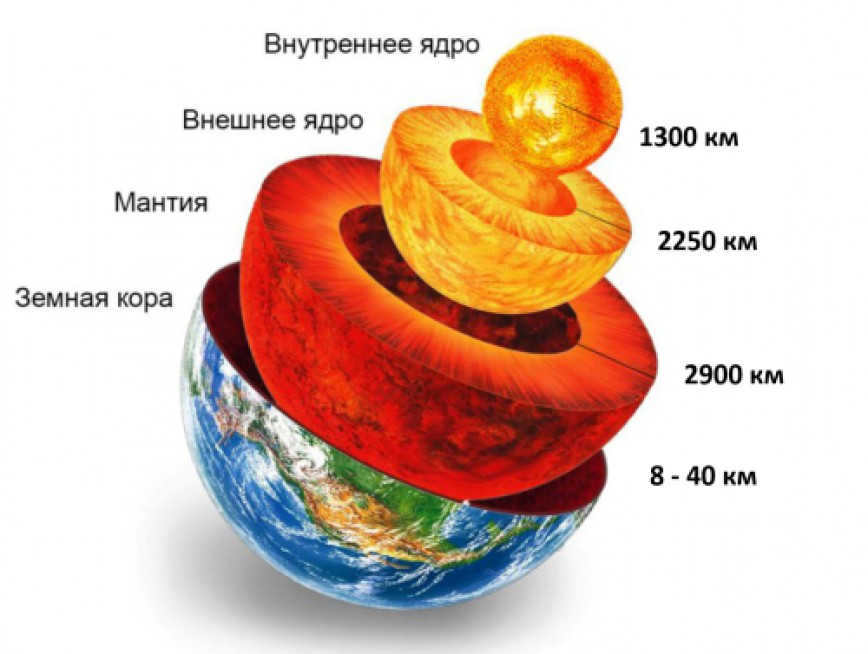
An Overview of the Earth’s Core
The Earth’s core is comprised of both an outer and inner layer. It is widely known that the outer core, which is located adjacent to the mantle, exists in a liquid state. This liquid state is responsible for generating the Earth’s magnetic field.
Additionally, the outer core is believed to transfer heat to the mantle, leading to volcanic activity on the Earth’s surface in certain regions.
In contrast, the inner core is solid and has a similar hardness to the inner part of a walnut. It has a diameter of 1,220 kilometers and a temperature ranging from 5,000 to 6,000 degrees Celsius.
While not fully confirmed, it is believed that the inner core is primarily composed of iron and nickel crystals.
According to geologists, the Earth’s core can be compared to a matryoshka doll, where a smaller nucleus is concealed within. There is a theory proposing the existence of an “interior” inner core, which is also composed of metal crystals. The only distinction is that these crystals move in a different direction than those in the inner core: instead of moving northward, they move westward.
All celestial bodies in the solar system possess a core.
One thing remains certain: it is the core that provides warmth and safeguards our planet from within.
The Earth’s Core Temperature
The central and deepest part of planet Earth, known as the core or geosphere, lies beneath the mantle. Composed primarily of an alloy of iron and nickel, the core is estimated to be located at a depth of 2,900 km. With an average spherical radius of 3,500 km, the core is divided into two zones – the inner and outer regions, with a transitional area between them. Each of these sections of the globe has its own unique temperature. In this article, we will explore the temperature of the Earth’s core.
Characteristics of the temperature regime
Due to the presence of multiple regions within the nuclear component, the temperature varies across these areas:
- On the surface of the solid core, the temperature is recorded at 6,230 Kelvin (plus or minus 500 units); when converted to Celsius, this value equals 5,960 (plus or minus 500 units);
- In the central section, the density can reach up to 12.5 tons per square meter;
- Furthermore, the pressure can reach 3.7 million atmospheres;
- The core mass is approximately 1.932*10^24 kilograms.
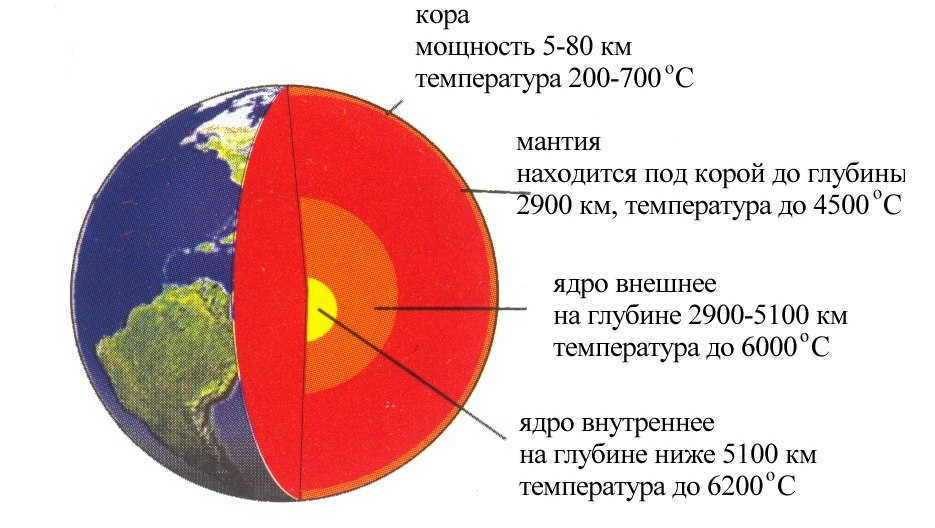
The Earth’s core temperature is a topic that has limited information available. Nevertheless, scientists have determined the temperature of the Earth’s core with a 90% probability of accuracy.
Research History
Henry Cavendish was one of the first to propose the existence of a denser zone within the Earth. He conducted calculations and discovered that the temperature in this zone is significantly higher than the temperature of rocks found on the Earth’s surface.





